2011-04-07 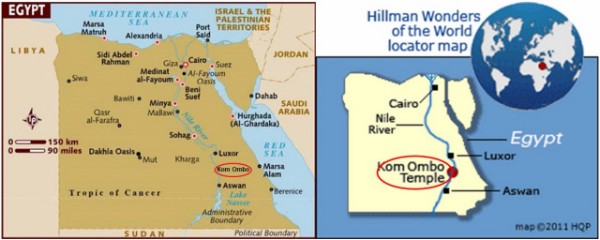
尼罗“溪谷”河一定长比天河,不然为什么源于它的神话传说生生不息,而且从不见古埃及人嫌其久,亦不见古埃及人嫌其玄,更不见古埃及人嫌其多?展示神圣王权的哈罗里斯即老荷鲁斯“鹰首神”(Haroeris),象征丰产富饶的索贝克“鳄鱼神”(Sobek),游走阴间冥界的阿努比斯“胡狼神”(Anubis),造化万物生灵的伊西斯“救世女神”(Isis),赐福母爱丰满的哈索尔“爱之女神”(Hathor),……康翁波“金山”双神庙则是这样一座祭奉荷鲁斯和索贝克的“双神殿”。 康翁波双神庙位于尼罗河畔南沿,周围一片农田绿洲,每年夏天七月十五号河水泛滥,给地处河谷的村庄披上了一层厚厚的淤泥,自然灌溉后土地肥沃养分充足,庄稼伺机巧取豪夺一年三熟。抽过穗的玉米棒子胖嘟嘟沉甸甸,始终耷拉着脑袋扪声不语;头戴花帽的甘蔗昂头挺胸,一有风吹草动,便轻歌曼舞尽显窈条身段,四月上旬我们到访的时候,正是当地努比亚“黄金”人喜获丰收的季节。
康翁波双神庙融合了古埃及法老后期托勒密“好战”时代和希腊“古老”─罗马“力量”建筑特点,罗马式帅气的大门和宽敞的庭院、古希腊式多柱的前厅正堂、古埃及式神明普照大地的祭祀成双成对,一条中轴线将其分成相互对称的两部分,左边供奉鹰首神,右边祭祀鳄鱼神,许多石柱精心刻着代表“上埃及”莲藕或百合以及体现“下埃及”纸莎草(Papyrus)浮雕。
除此而外,康翁波双神庙最大特色还有:石板石块之间留有榫接痕迹;在祭堂的背后有一处大型壁画,专门为纪念被奉为古埃及建筑与医药双神祭司印和闐(Imhotep)而刻的手术刀及其它医疗器械,其对面浮雕上清晰地记载着当年计算尼罗河潮涨潮落的日期和表达日月经纶的年历;40具从附近墓地发掘出来的鳄鱼木乃伊陈列在哈索尔礼拜堂之中。
参观完毕,时过八岁的孩子有感而发,写下这样的旅行见闻。
【Aiden in English】 Wow! Egypt has a lot of history. Perhaps the Temple of Kom Ombo is large because it holds a significant amount of history. That's not entirely accurate. Every temple has a Hypostyle Hall, and so does the Temple of Kom Ombo. I think there are four rows of columns with mostly no color painting. Over thousands of years, the color had seemed to fade from the walls. Many columns on the left side of the temple featured lotuses, which stood for Upper Egypt, while some columns on the right had papyrus, representing Lower Egypt. The ancient Egyptians built walls by putting limestone blocks next to each other, and then they drew and carved on the walls. They also added hieroglyphs and cartouches to the drawings and carvings. There is a story about two gods named Osiris and Seth. It is about the Key of Life. The Key of Life, carved on the slabs, is often in front of your mouth, which shows that the spirit comes out from your mouth when you die. The story originated from a tale that Osiris was a benevolent god, and his brother, Seth, Osiris's archenemy, was considered evil. Seth wanted to kill Osiris. He pretended to do it adequately. He said whoever fitted into the tomb would die inside. Osiris tried it first, and Seth closed the lid hard. Osiris was suffocated and died soon. Seth knew if the body wasn't destroyed, Osiris would then come back to life. So he chopped it up into pieces and threw it all in different places. Osiris's wife, Isis, turned into an ibis bird and flew all over the world. In Egypt, she finally found every piece except his penis. But she made a penis from a spell, and Osiris was reborn. 【红霞译】
怪哉,埃及有这么多历史!康翁波双神庙之所以雄伟,无非是因为它的厚重?其实不然。〖注〗康翁波双神庙面积不大。 每一个庙宇都有多柱厅,康翁波双神庙也不例外,我记得它有四排雕刻的石柱,几千年过后,上面的颜料已褪得跟从来没有着过色一样,其中左侧刻有藕莲花的石柱代表“上埃及”,而右侧雕有纸莎草的则代表“下埃及”。古埃及人喜欢用石灰石建筑墙壁,一个捱一个,接着画幅图刻张像,末了再用圣书体的象形文字和皇帝徽章点缀一番。 康翁波双神庙有一个关于冥界神和乱世神的传说故事,新生复活常常出现在石板雕像人物的嘴前,表示当离开人间,他(她)的灵魂从嘴里超渡出来。冥王神奥西里斯是善良的天神,而弟弟混沌神赛特却是他的敌人,名符其实的恶魔,赛特想要篡权夺位杀死哥哥奥西里斯,便想出一个绝恶办法,引诱奥西里斯躺进一口棺材,然后将棺材关紧把奥西里斯活活憋死,因为赛特知道如果不销毁尸体,那么奥西里斯必将复活,于是赛特将奥西里斯的尸体剁成碎块扔到埃及各个角落。奥西里斯的妻子救世女神伊西斯闻讯立刻变成一只朱鹭四处寻觅,最后终于如愿以偿,唯一不幸的是奥西里斯的生殖器未能找到,但伊西斯念来咒语,使奥西里斯重获新生。
Today in History(历史上的今天): 2011: 埃及尼罗河游轮(Cruising on the Nile, Egypt) 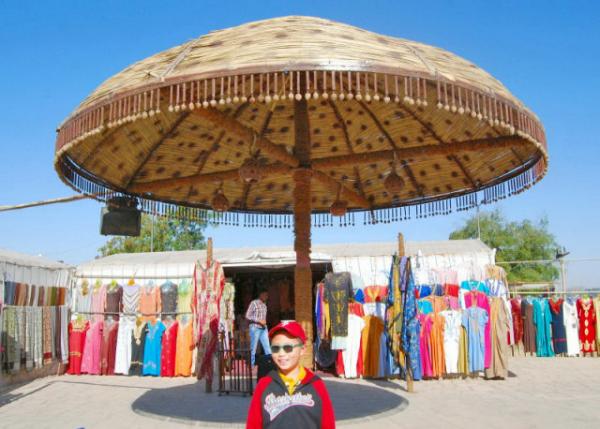 Stop by Keffiyeh, Shemagh, Gutra & Hijab before Visiting Temple of Kom Ombo Stop by Keffiyeh, Shemagh, Gutra & Hijab before Visiting Temple of Kom Ombo
(参观双神庙前游览自由市场·方头巾、提花头巾、白头巾、盖头 04-07-2011)
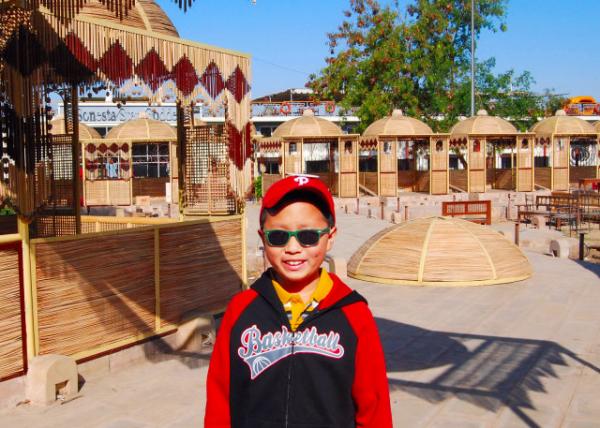 Popular Gazeboes @ Flee Market Popular Gazeboes @ Flee Market
(自由市场·流行的凉亭 04-06-2011) 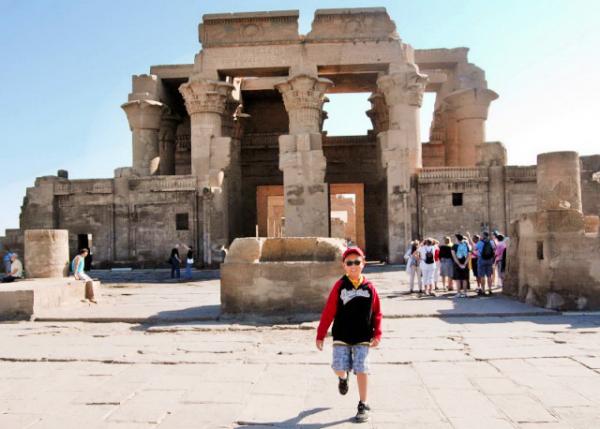 Double Entrance to Kom Ombo Temple Double Entrance to Kom Ombo Temple
(康翁波双神庙·双门 04-07-2011) 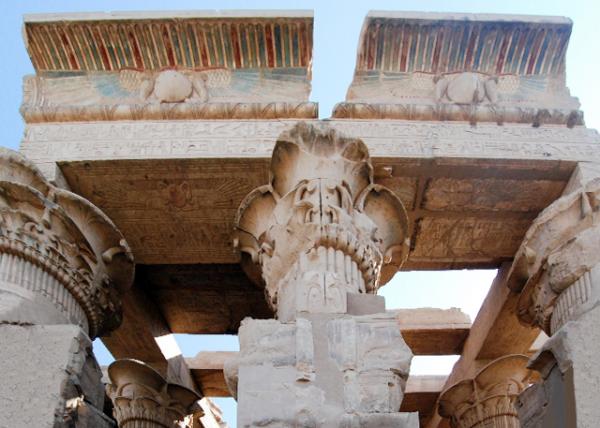 Cornice Detail Gate of Neos Dionysos w/ Preserved Papyrus Shaped Column & Ceiling Cornice Detail Gate of Neos Dionysos w/ Preserved Papyrus Shaped Column & Ceiling
(托勒密十二世新狄俄尼索斯“酒神”城门檐口细节·拥有保存完好的纸莎草形柱和天花板)
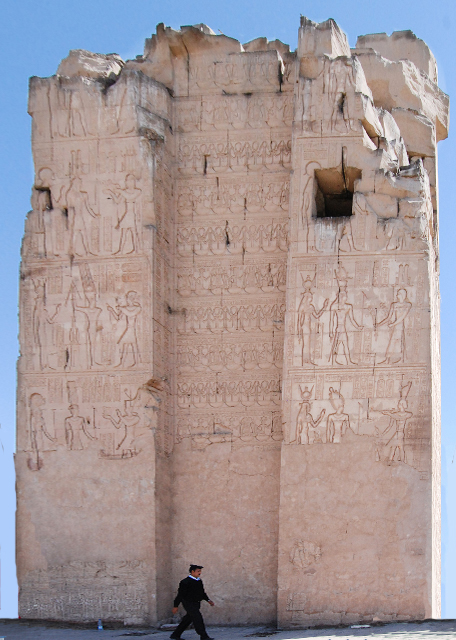
Gate of Neos Dionysos (托勒密十二世新狄俄尼索斯门) 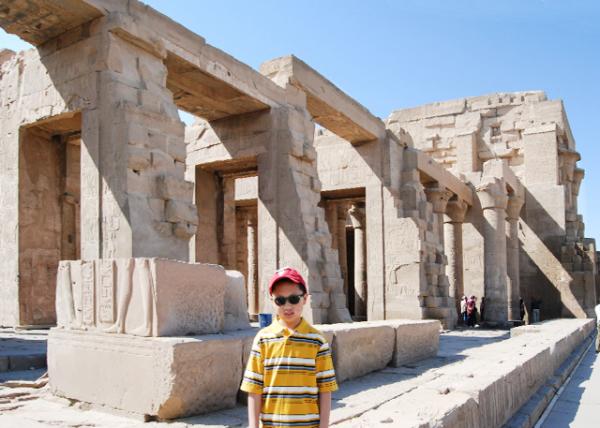 Overview of the Dual Temple of Horus & Sobek Overview of the Dual Temple of Horus & Sobek
(荷鲁斯与索贝克双神庙·概览 04-07-2011)
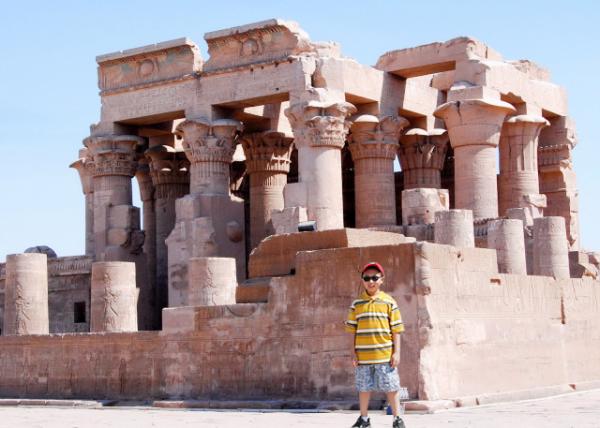 Preserved Papyrus Shaped Column & Ceiling Preserved Papyrus Shaped Column & Ceiling
(保留下来的纸莎草柱和天花板 04-07-2011) 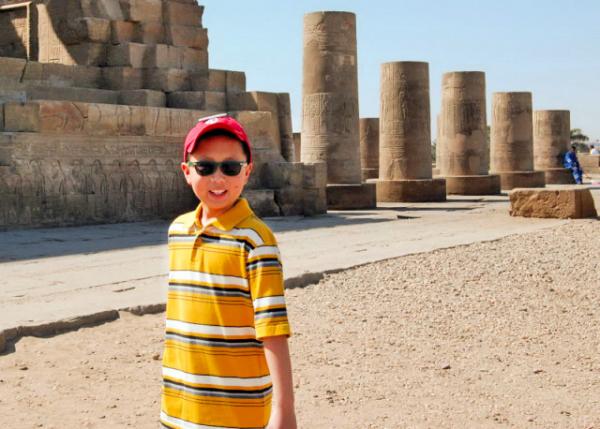 Forecourt, Courtyard of Sobek and Haroeris Forecourt, Courtyard of Sobek and Haroeris
(鳄鱼神与鹰首神庙前院 04-07-2011) 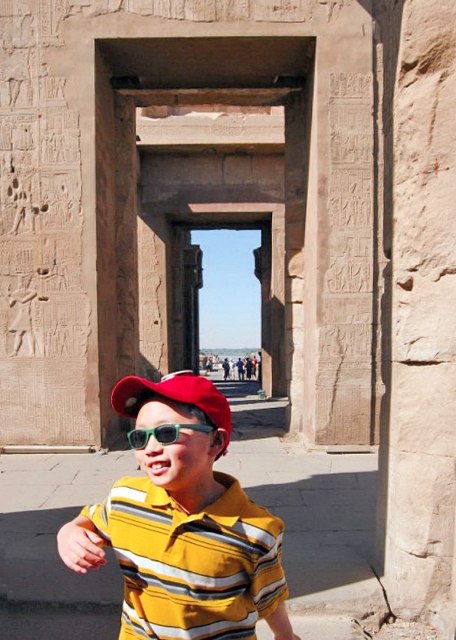
The Vestibule (前厅 04-07-2011) 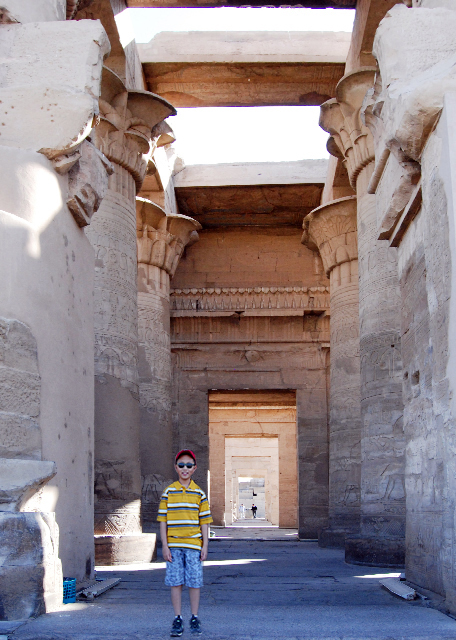
The Sanctuary of Sobek Built During the Ptolemaic Dynasty (180–47 BC) (索贝克圣殿·建于公元前180—47年托勒密王朝 04-07-2011) 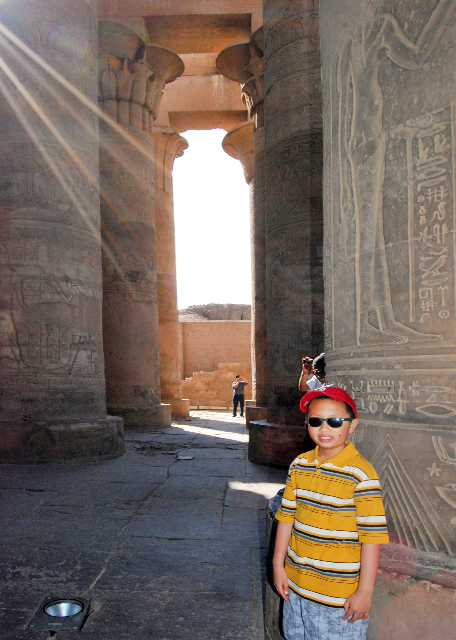
Hypostyle Hall Decorated w/ Hieroglyphs Depicting Scenes from Ancient Egyptian Mythology (多柱厅·柱子上装饰着描绘古埃及神话场景的象形文字 04-07-2011)
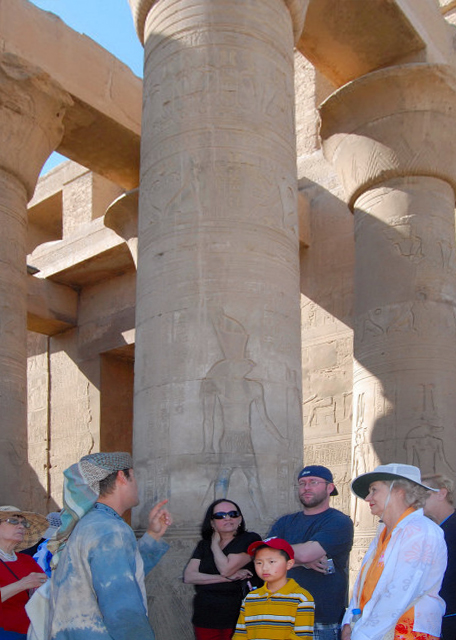
Pillars Made from Black Granite (石柱·由黑色花岗岩制成 04-07-2011)
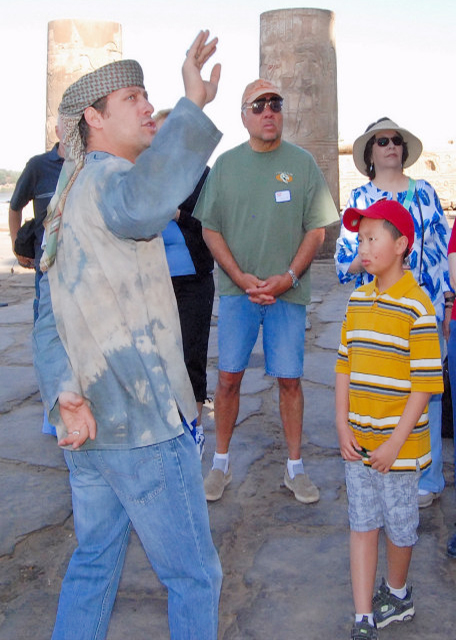
Hypostyle Hall (多柱厅 04-07-2011) 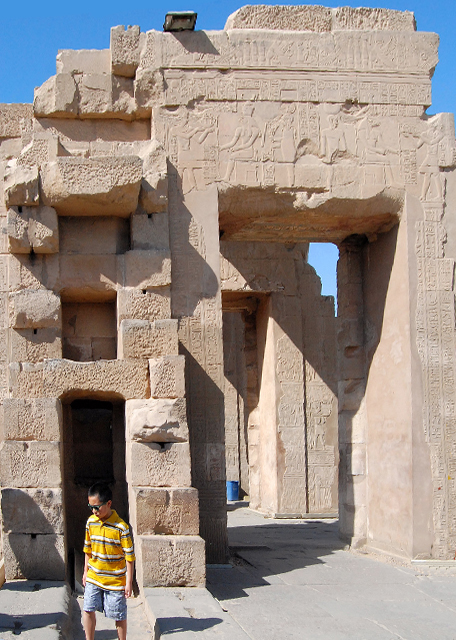
Wall w/ Reliefs (带浮雕的墙壁 04-07-2011) 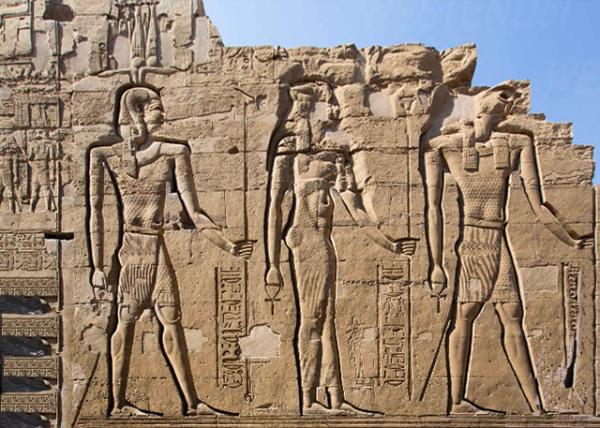 Temple of Sobek and Haroeris Temple of Sobek and Haroeris
(索贝克和哈罗里斯神庙)
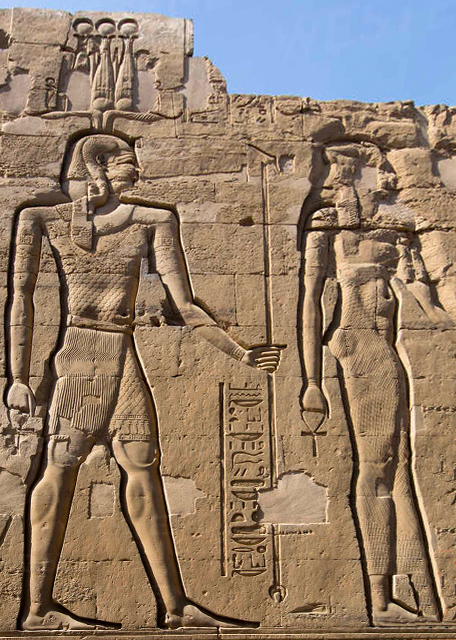
Wall Relief @ Temple of Sobek and Haroeris (索贝克和哈罗里斯神庙·浮雕) 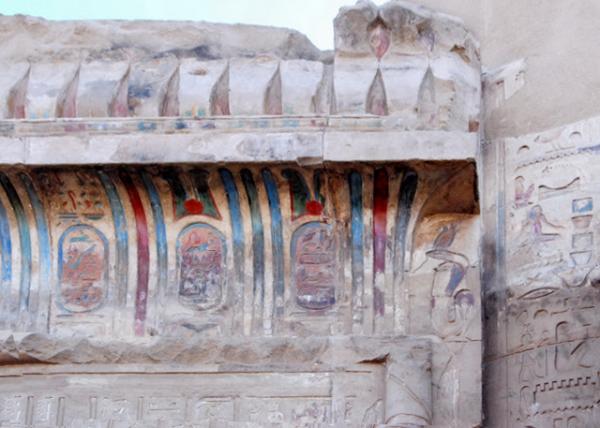 Cartouches @ Lintel (过梁上王室徽章) Cartouches @ Lintel (过梁上王室徽章)
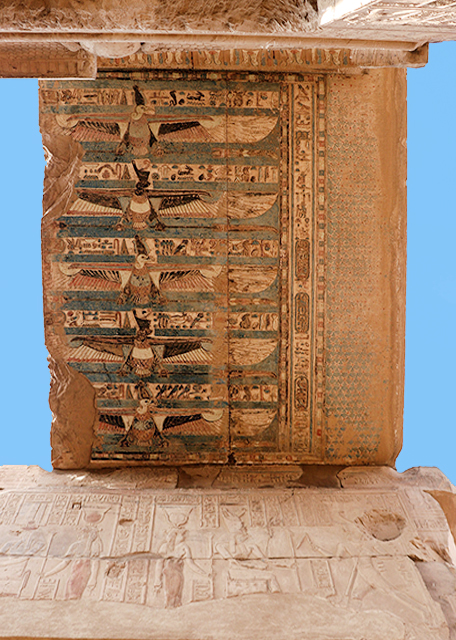
Roof (屋顶) 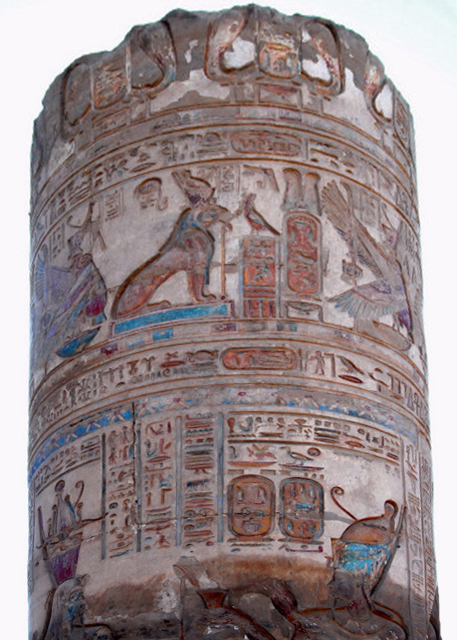
The Column of Hypostyle Hall (多柱厅·石柱) 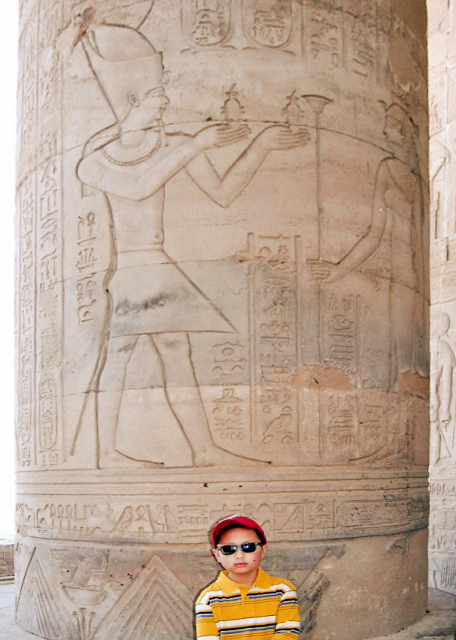
A Well-Preserved Frieze (保存完好的饰带 04-07-2011) 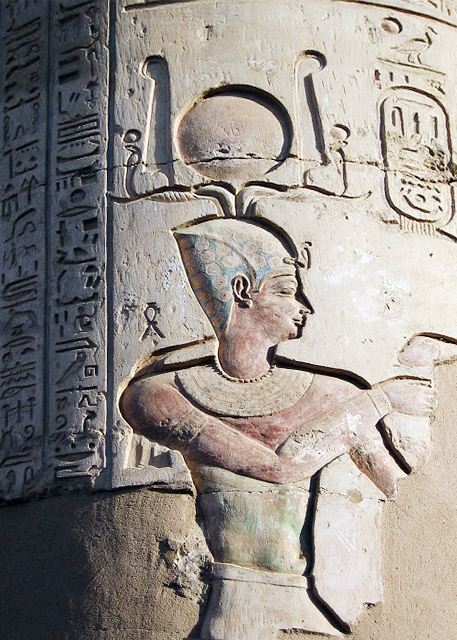
Close-up of the Frieze (饰带·特写) 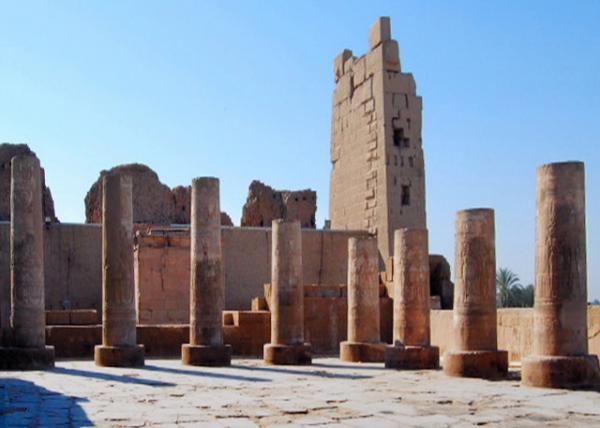 Chapel of Hathor Associated w/ Love, Joy, & Motherhood Chapel of Hathor Associated w/ Love, Joy, & Motherhood
(哈索尔礼拜堂·供奉着与爱情、欢乐和母爱有关的女神) 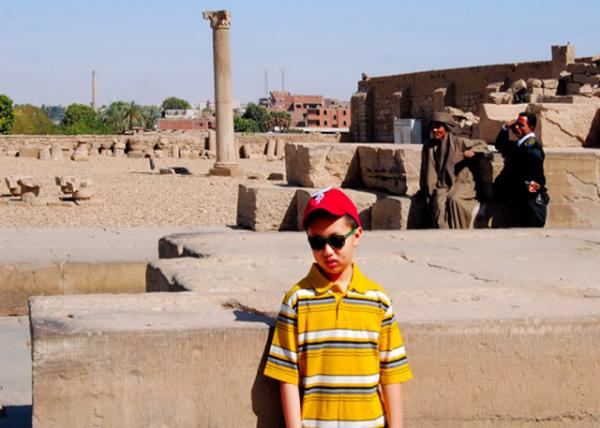 Mammisi or Birth House Dedicated to Osiris & Isis for Their Son Horus Mammisi or Birth House Dedicated to Osiris & Isis for Their Son Horus
(玛米西“出生地”·献给冥王神和生育神之子富饶神 04-07-2011)
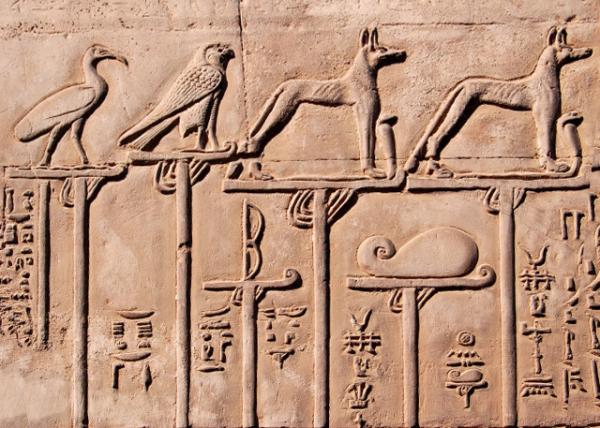 Ancient Graffito (古代涂鸦) Ancient Graffito (古代涂鸦)
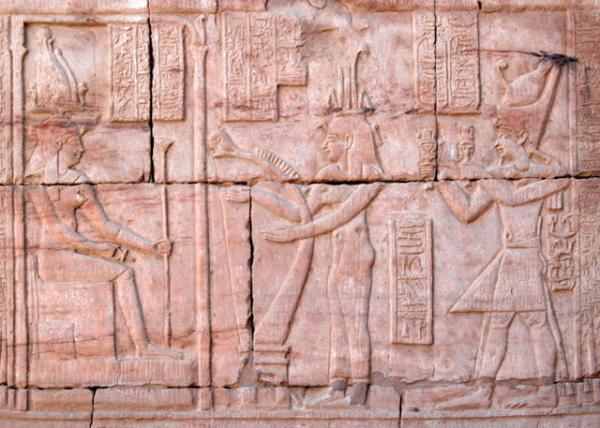 Ptolemy VI Philometor Making an Offering to the Gods @ Kom Ombo Ptolemy VI Philometor Making an Offering to the Gods @ Kom Ombo
(托勒密六世“爱父者”在康翁波向神献祭)
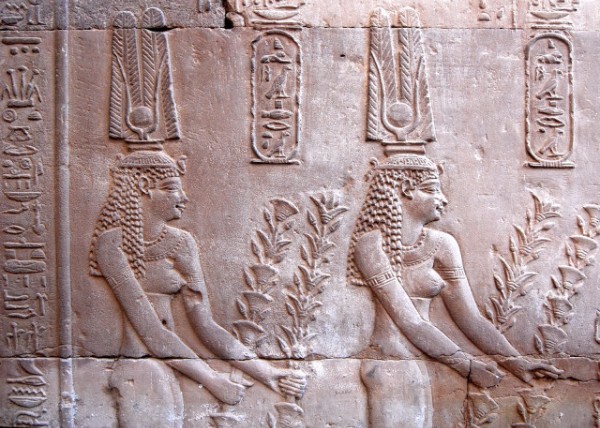
Cleopatra Image (天父荣耀)
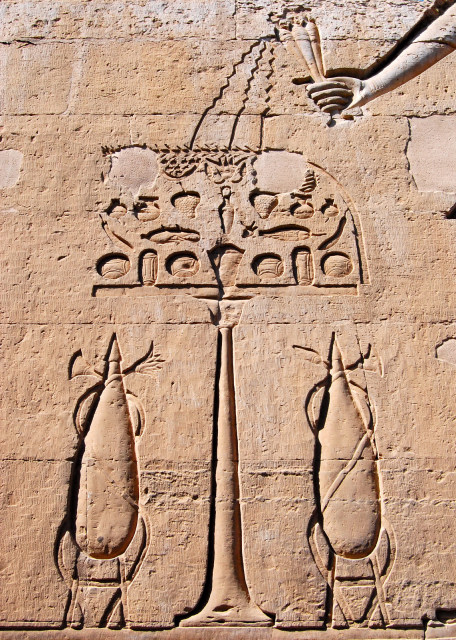
Cartouche Ptolemy XII (托勒密十二王室徽章)
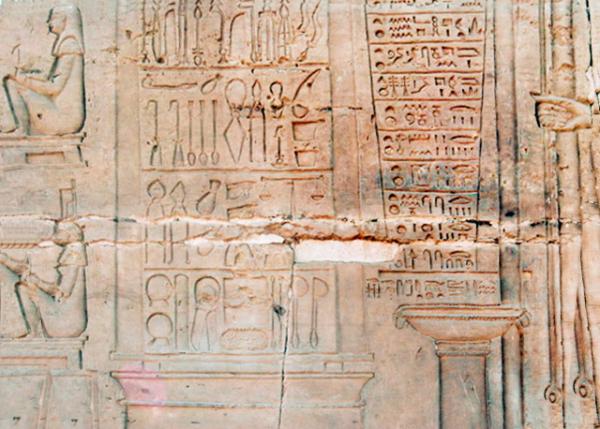 Carved in Scalpels, Forceps, Scissors, & Medical Apparatus plus Prescriptions & 2 Goddesses Sitting on Birthing Chairs Carved in Scalpels, Forceps, Scissors, & Medical Apparatus plus Prescriptions & 2 Goddesses Sitting on Birthing Chairs
(手术刀、钳子、剪刀等医疗器械上饰物与处方和坐在产椅上俩女神) 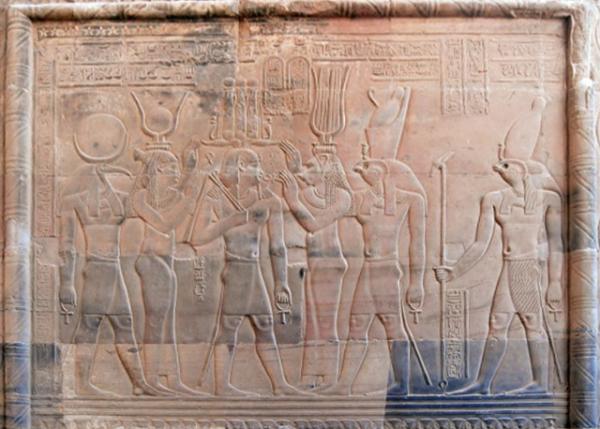 Reliefs of Haroeris, the Falcon God & Sobek, the Crocodile God Reliefs of Haroeris, the Falcon God & Sobek, the Crocodile God
(鹰首神与鳄鱼神浮雕) 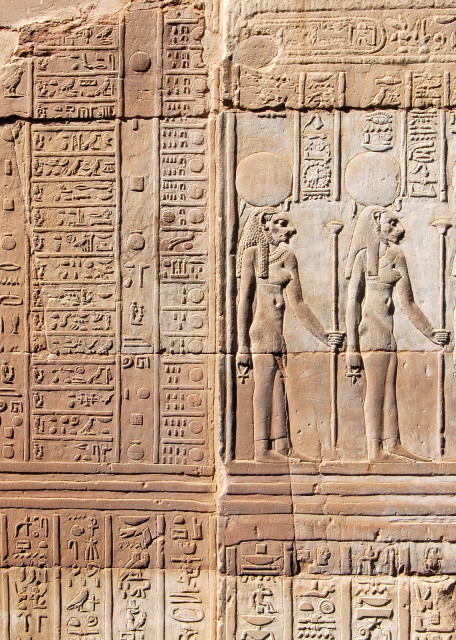
The calendar displays the figures for each day of the month (roll over the picture) and the hieroglyphs for the inundation season, Akhet. On the thirtieth of the Season of the Harvest, one can see the hieroglyph for the Season of the Emergence, which indicates the end of the harvest season. The next day is Akhet. (日历显示了如滚动图片上的当月天数以及水灾的象形文字,在收获季节的第30天,可以看到汛期季节的象形文字,它表示收获季节的结束,接下来第二天便是水灾。) 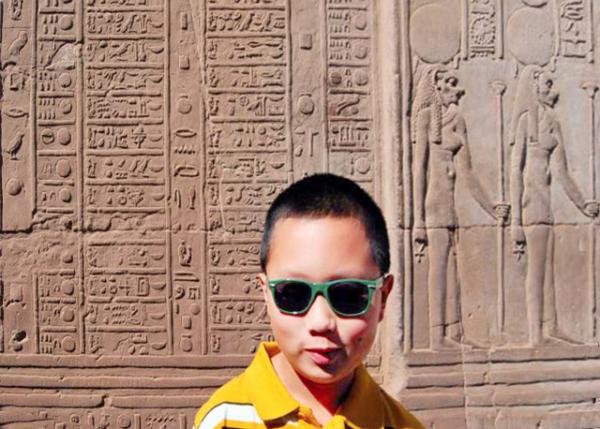 Hieroglyphic calendar (日历象形文字 04-07-2011) Hieroglyphic calendar (日历象形文字 04-07-2011)
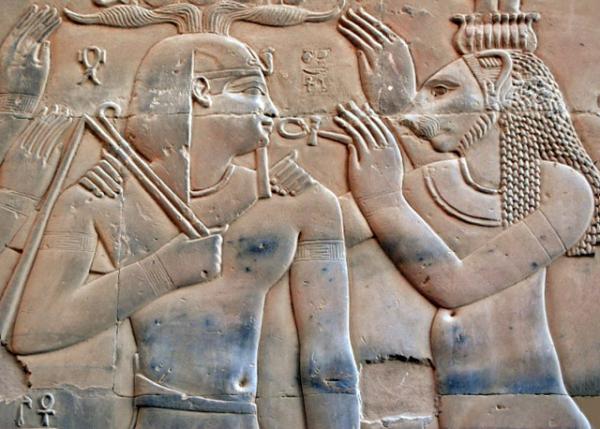 Sobek w/ Typical Attributes of Kingship, Including A Was-Sceptre and Royal Kilt. The ankh in his hand represents his role as an Osirian; he, aler, and his crown are a solar crown associated with one of the many forms of Ra. Sobek w/ Typical Attributes of Kingship, Including A Was-Sceptre and Royal Kilt. The ankh in his hand represents his role as an Osirian; he, aler, and his crown are a solar crown associated with one of the many forms of Ra.
(具有王权典型特征的鳄鱼神,包括王权和王室短裙,手中生命之钥代表他作为丰产神救主角色,头上皇冠与诸多形式的太阳神相关) 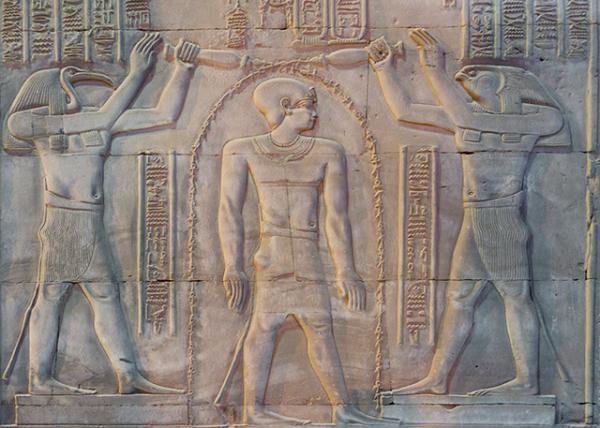 Ptolemy IX Being Purified by Thôt & Horus Ptolemy IX Being Purified by Thôt & Horus
(托特“智慧之神”与荷鲁斯净化托勒密九世) 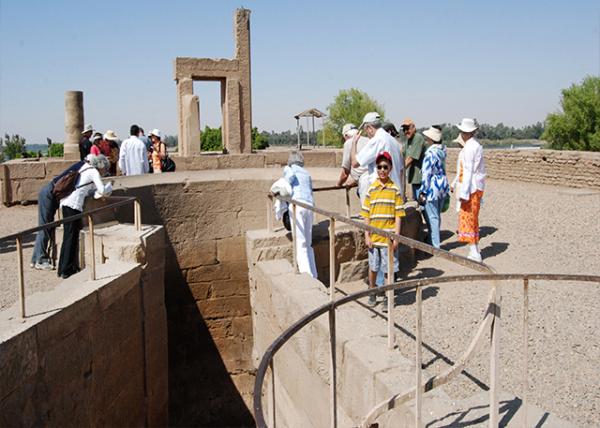 Ancient Nilometer, a Circular Well Used on Rhoda Island in Cairo, Especially During the Season of the Flooding of the Nile Ancient Nilometer, a Circular Well Used on Rhoda Island in Cairo, Especially During the Season of the Flooding of the Nile
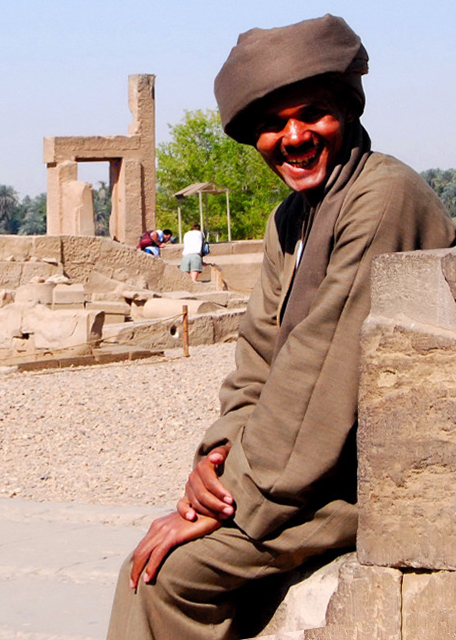
Nubian (努比亚人) 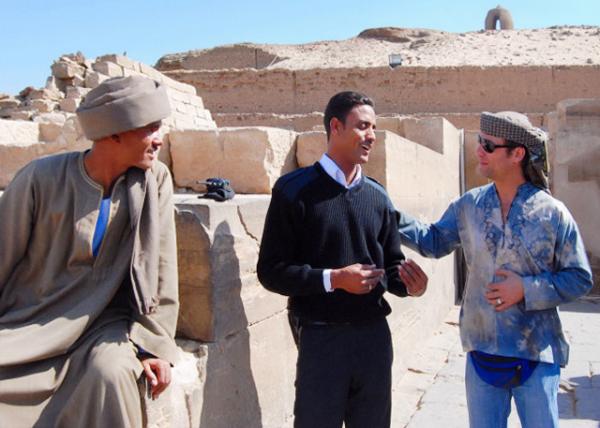 Nubian,Policeman & Guide (努比亚人、警察与导游) Nubian,Policeman & Guide (努比亚人、警察与导游)
 School Kids(小学生) School Kids(小学生)
Crosslinks(相关博文): 埃及(Egypt) Africa (漫游非洲) 小学二年级(2nd Grade)
|
